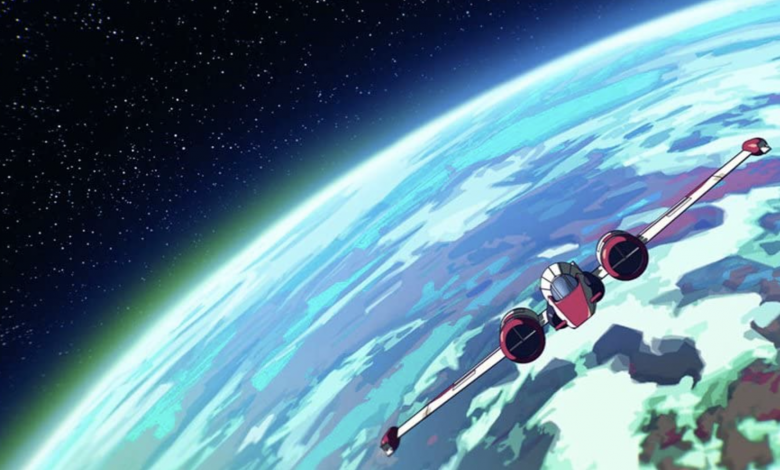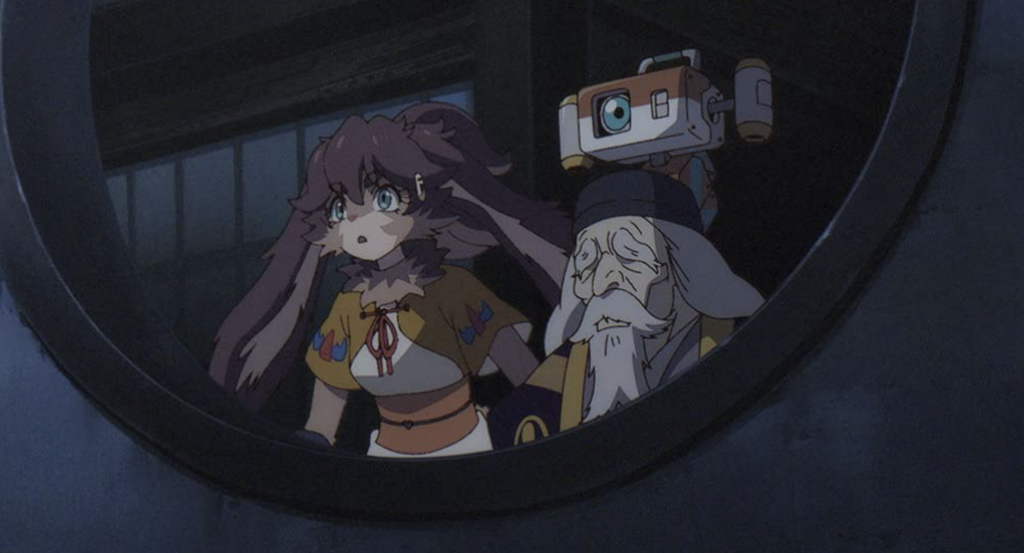Star Wars Meets Anime? I’ve Got a Good Feeling about This!

Melina List ‘25 / Emertainment Monthly Books Section Editor
A galaxy far, far away just got a little bit bigger with the release of Star Wars: Visions, a short film anthology that brings fresh perspective to the beloved franchise. The anthology, streaming exclusively on Disney+, contains nine short films created by seven different Japanese animation studios. The series is set across time and space in both recognizable environments and new ones entirely, and while each episode contains an original story, fans may recognize a familiar face or two. The English voice cast is star-studded, featuring Lucy Liu, Joseph Gordon-Levitt, Neil Patrick Harries, George Takei, and other household names.
Visions is truly unlike anything that the Star Wars franchise has ever produced. It’s remarkably different from their previous animated ventures such as Star Wars: The Clone Wars and Star Wars: Rebels in its tone and form. This show, while of high quality, takes itself far less seriously than previous projects, which resulted in unparalleled creativity provided by the seven animation studios: Kamikaze Douga, Studio Colorido, Trigger, Kinema Citrus, Production IG, Science SARU, and Geno Studio. This show is not, however, the first time that Star Wars has played with releasing media created by artists from outside of the franchise, as they’ve been publishing licensed novels written by otherwise unaffiliated authors for decades. Based on the positive results, the formula clearly works for both books and TV, but similarly to the novels, Star Wars: Visions raises several questions about canon and how it is defined.
Sticklers for canon may have a hard time enjoying this series. Star Wars is notorious for taking liberties with their own lore—and the laws of physics—but Visions brings that lack of consistency to a much higher level. Several episodes contain plot elements and throw-away lines that stand in blatant opposition to what fans already know about the universe through the Star Wars movies, TV shows, and books. Unfortunately for those fans who like to clearly know what is canon and what is not, this situation is not so simple as writing off the entire series as not canon.
Ronin, the main character of episode one, “The Duel,” is the subject of a new book titled Ronin: a Visions Novel, which comes out on October 12, 2021. The novel, written by Emma Mieko Candon, is being published through the Del Rey imprint of Random House. Del Rey has published dozens of Star Wars novels in the past, and since 2014, all of them have indeed been canon, leaving the impression that Ronin will be as well. It stands to reason that at least the first episode of Visions could be interpreted as canon, whereas others, like episode three, “The Twins,” could likely not be without some serious retconning by Lucasfilm. So is Star Wars: Visions canon? Kinda…sorta…not really…but also very much so—it’s a real head-scratcher. Try not to think about it too hard on the penalty of a frustrating viewing experience.

Putting aside the aforementioned canon complications, this is a massively enjoyable show. While not necessarily emotionally impactful enough to join the ranks of the original trilogy or Clone Wars in the hearts of fans, it’s an all-around good time. One of the benefits of having episodes produced by wildly different animation studios is that there really is something for everyone. Fans of old-school Westerns may favor episode one, “The Duel,” while anime lovers could prefer episode three, “The Twins.” Episode five, “The Ninth Jedi,” is arguably the most similar to a typical Star Wars movie, while episode two, “Tatooine Rhapsody,” is a new kind of wacky for this franchise. Plus, thanks to the short film format, if a viewer is not a fan of any individual episode, they only spent twenty minutes of their life having to suffer through it versus the several hours runtime and months of press buildup for a feature film.
As an anthology, this collection might be best enjoyed one at a time versus binge-watched. Because of the animation studios’ massively different approaches to animation, watching several episodes in immediate succession whips viewers back and forth between disparate tones and art styles, which can be disorienting. In addition, there are repetitive elements throughout the show, which can be grating when watching them back to back. In traditional Star Wars fashion, many of the episodes use the same iconic lines as the others, and to put it plainly, it gets annoying very quickly. Several focus on the same themes—power, the consequences of war, destiny, and family—and repeatedly invoke the same mechanics of the universe—kyber crystals, lightsabers, and certain combat moves. The above elements are all important within the Star Wars universe, but seeing the same ideas and objects rehashed in one story after another gets stale after a couple episodes.
There are a few other patterns within the collection that don’t become repetitive and instead massively enhance the quality of the project. The music across this series is consistently amazing and is a standout component of this show. There is an unexpected variety of music genres explored throughout the series that heightens each episode’s individuality. Speaking of individuality, while the art styles are vastly different in each episode, the hard work and expertise of the seven animation studios are apparent in the animation. For example, episode one, by Kamikaze Douga, is stylized to appear reminiscent of black and white manga, while episode six, by Science SARU, features cute characters and pastels. Each studio showcased immense creativity and imagination in their short films and produced some great work.
Star Wars: Visions is a worthy addition to the Star Wars franchise. The show is original, beautiful, and above all, it’s fun. Especially with the recent releases of shows like The Mandalorian, where it feels like viewers need to have studied in order to keep up with the plot, it’s refreshing to see a show that has a low knowledge barrier for understanding and that likely won’t play a big role in any future projects. While nothing has been announced, hopefully viewers will get to see more of this delightful show in the future.